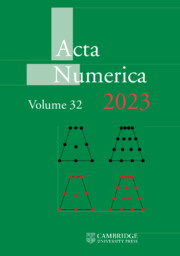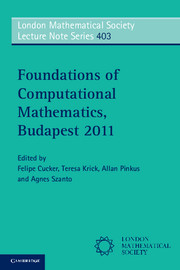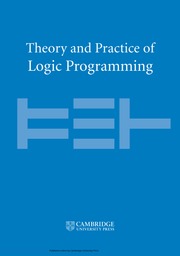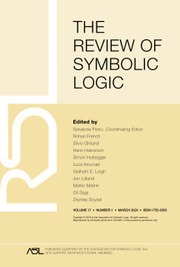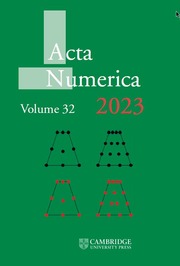Mathematical and Computational Techniques for Multilevel Adaptive Methods
Multilevel adaptive methods play an increasingly important role in the solution of many scientific and engineering problems. Fast adaptive methods techniques are widely used by specialists to execute and analyze simulation and optimization problems. This monograph presents a unified approach to adaptive methods, addressing their mathematical theory, efficient algorithms, and flexible data structures. Rüde introduces a well-founded mathematical theory that leads to intelligent, adaptive algorithms, and suggests advanced software techniques. This new kind of multigrid theory supports the so-called 'BPX' and 'multilevel Schwarz' methods, and leads to the discovery of faster more robust algorithms. These techniques are deeply rooted in the theory of function spaces. Mathematical and Computational Techniques for Multilevel Adaptive Methods examines this development together with its implications for relevant algorithms for adaptive PDE methods. The author shows how abstract data types and object-oriented programming can be used for improved implementation.
Product details
February 1994Paperback
9780898713206
152 pages
254 × 176 × 11 mm
0.283kg
This item is not supplied by Cambridge University Press in your region. Please contact Soc for Industrial & Applied Mathematics for availability.
Table of Contents
- 1. Introduction. 1.1. Purpose and motivation
- 1.2. Notation
- 1.3. Basics and model problems
- 2. Multilevel Splittings. 2.1. Abstract stable splittings
- 2.2. Finite element spaces
- 2.2.1. Approximation property, inverse property, and stable bases
- 2.2.2. Besov norms
- 2.2.3. Upper bounds
- 2.2.4. Lower bounds
- 2.2.5 Main theorem
- 2.3. Stable bases
- 2.4. Induced splittings
- 2.5. Multilevel iterations
- 2.6. Multilevel error estimators
- 3. The Fully Adaptive Multigrid Method. 3.1. Adaptive relaxation
- 3.1.1. Sequential adaptive relaxation
- 3.1.2. Simultaneous adaptive relaxation
- 3.1.3. Evaluation
- 3.2. Algebraic structure
- 3.3. Application of the theory of multilevel splittings
- 3.4. Multilevel adaptive iteration
- 3.4.1. Tracing dependencies between levels
- 3.4.2. Cycling strategies
- 3.4.3. Selection of the critical tolerances
- 3.5. Analysis of the V-cycle
- 3.6. Hierarchical transformations
- 3.6.1. Hierarchical basis
- 3.6.2. Efficient implementation of the multilevel adaptive iteration by hierarchical transformations
- 3.7. Virtual global grids
- 3.8. Robustness
- 3.9. Parallelization
- 3.10. Numerical examples
- 3.10.1. Adaptive refinement at a re-entrant corner
- 3.10.2. Virtual global grids and multilevel adaptive solution
- 3.11. Perspectives
- 3.12. Historical remark
- 4. Data Structures. 4.1. Introduction
- 4.1.1. Overview
- 4.1.2. Relations
- 4.1.3. Specification of software
- 4.1.4. Efficiency and modularity
- 4.2. Finite element meshes
- 4.2.1. Classification
- 4.2.2. Triangulations
- 4.2.3. Topological structure of a finite element mesh
- 4.2.4. Geometric structure
- 4.2.5. Algebraic structure
- 4.3. Special cases
- 4.3.1. Uniform meshes
- 4.3.2. Quasi-uniform meshes
- 4.3.3. Piecewise uniform and quasi-discretionary unidiscretionary form meshes
- 4.3.4. Unstructured meshes
- 4.4. Adaptive techniques
- 4.4.1. A-priori adaptivity
- 4.4.2. Self-adaptive refinement
- 4.4.3. Algorithmic eequirements
- 4.4.4. Nested triangulations
- 4.4.5. Regular refinement
- 4.4.6. Refinement by bisection
- 4.4.7. Self-adaptive refinement with uniform patches
- 4.4.8. Virtual global grid refinement
- 4.5. Hierarchical meshes
- 4.5.1. Relations in the multilevel hierarchy
- 4.5.2. Element-based data structures
- 4.5.3. Node-based data structures
- 4.5.4. Classification of nodes
- 4.5.5. Semi-edges and connections
- 4.5.6. Partially refined meshes
- 4.5.7. Characteristic sets
- 4.6. Implementation using C++
- 4.6.1. Node classes
- 4.6.2. Efficiency for special cases requiring limited mesh flexibility
- 4.6.3. Virtual overloaded functions
- 4.6.4. The role of C++
- References
- Index.



